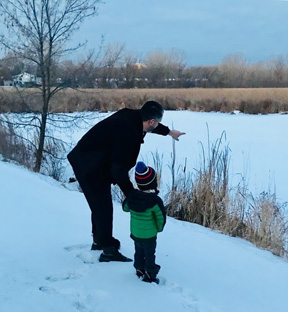On Thin Ice – Teaching Kids The Dangers Of Ice
Now is the time to talk to kids about the dangers of thin ice. As temperatures continue to dip below freezing, ice is forming on many lakes, ponds and rivers. But conditions vary across the state.
Minnesota Department of Natural Resources conservation officer Hannah Mishler has already responded to multiple ice rescue calls.
“Ice, especially snow covered ice, is extremely deceptive. You can’t see dangerous cracks or the thickness of the ice under the snow,” Mishler said.
With many children out of school for holiday breaks, they may look toward the newly formed ice for entertainment. “Teach your children that ice is never 100 percent safe,” cautions Mishler. “If your child is near the ice, you should be near your child.”
While adults and children are recreating outdoors, they should always take precautions around any body of water during the cold water season.
Lisa Dugan, DNR recreation safety outreach coordinator, advises in addition to checking conditions locally and being prepared with an ice safety kit, anyone recreating on ice should be wearing a life jacket. “A life jacket is the one piece of equipment that increases your odds of not drowning from cold water shock, hypothermia or exhaustion should you fall through the ice.”
Ice safety guidelines
No ice can ever be considered “safe ice,” but following these guidelines can help minimize the risk:
- Always wear a life jacket on the ice (except when in a vehicle).
- When a child is near the ice, an adult should be near the child.
- Caution children to stay off ponds, streams, and other bodies of water.
- A thin coating of ice on a pond or lake does not mean it is safe.
The minimum ice thickness guidelines for new, clear ice are:
- 4 inches for ice fishing or other activities on foot.
- 5-7 inches for a snowmobile or all-terrain vehicle.
- 8-12 inches for a car or small pickup.
- 12-15 inches for a medium truck.
- Double these minimums for white or ice covered with heavy snow.
For more information, visit mndnr.gov/icesafety and mndnr.gov/boatingsafety.










